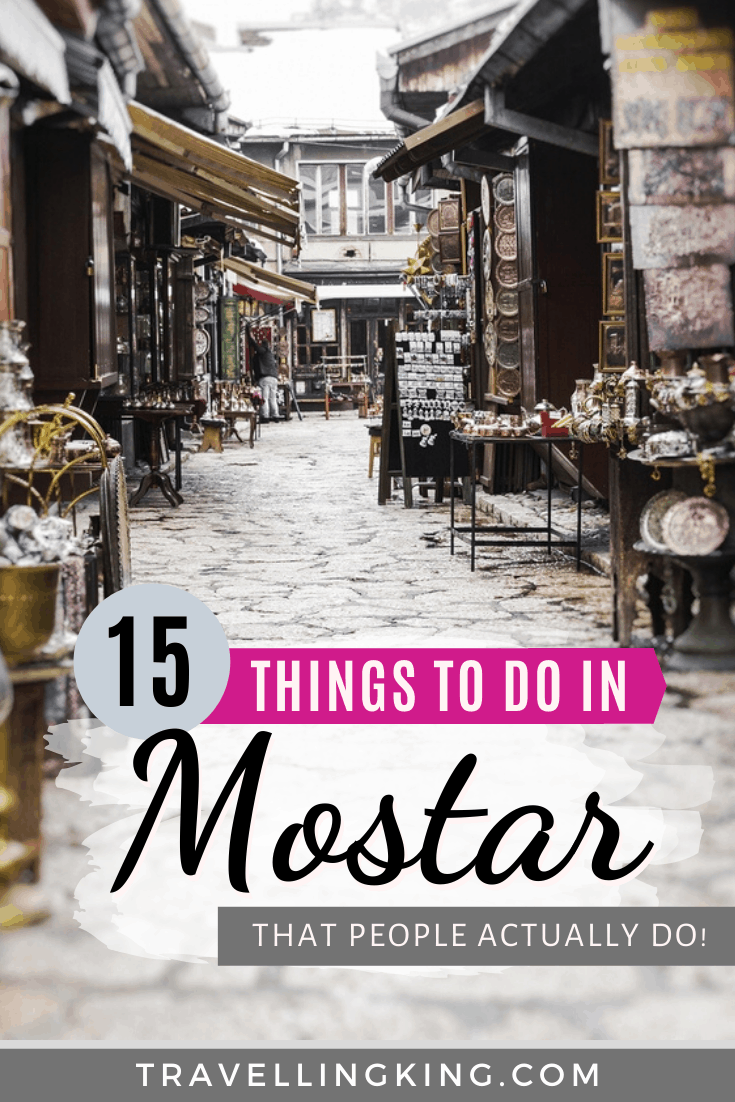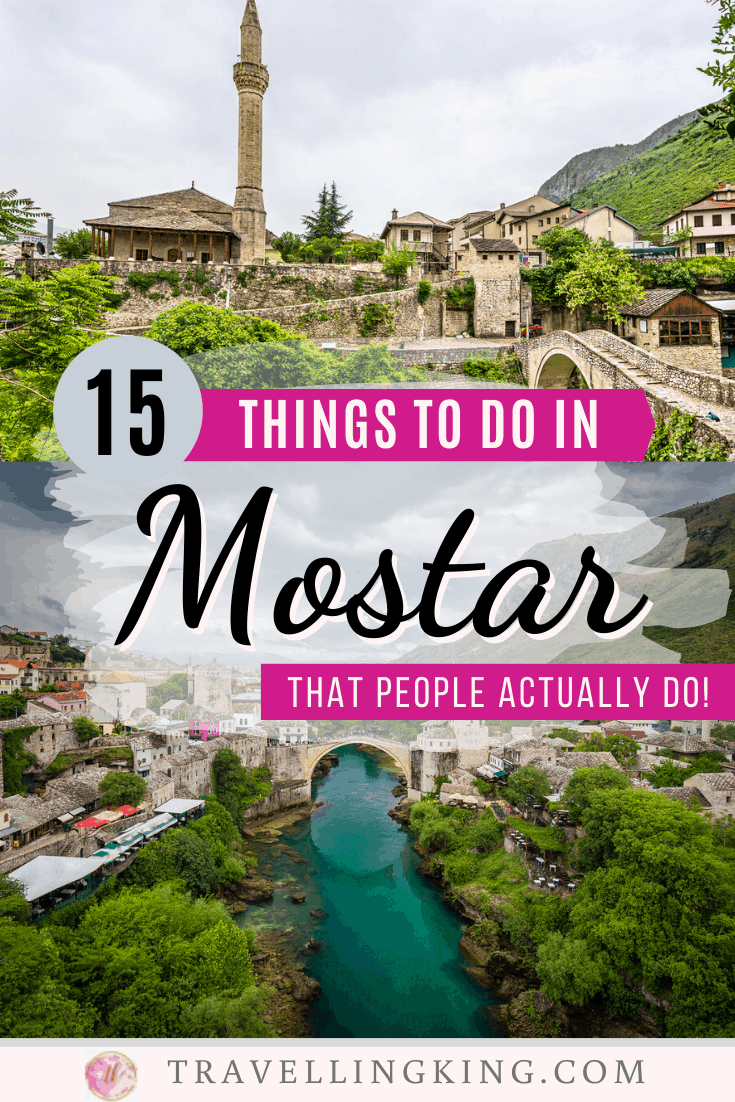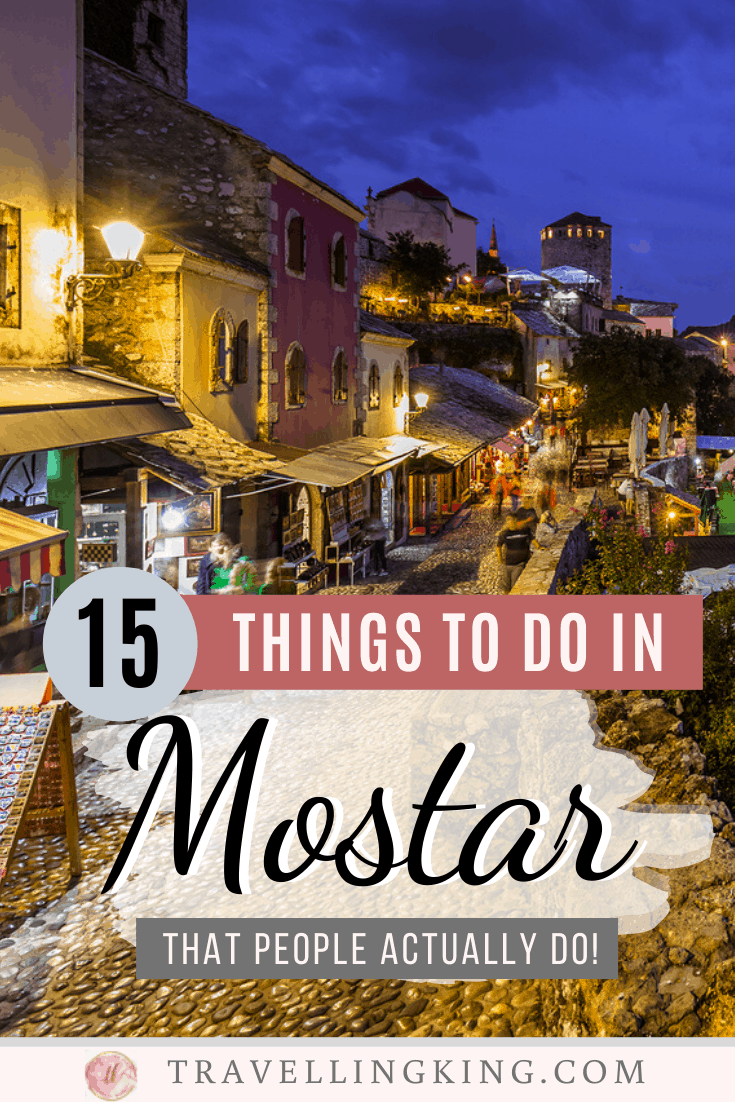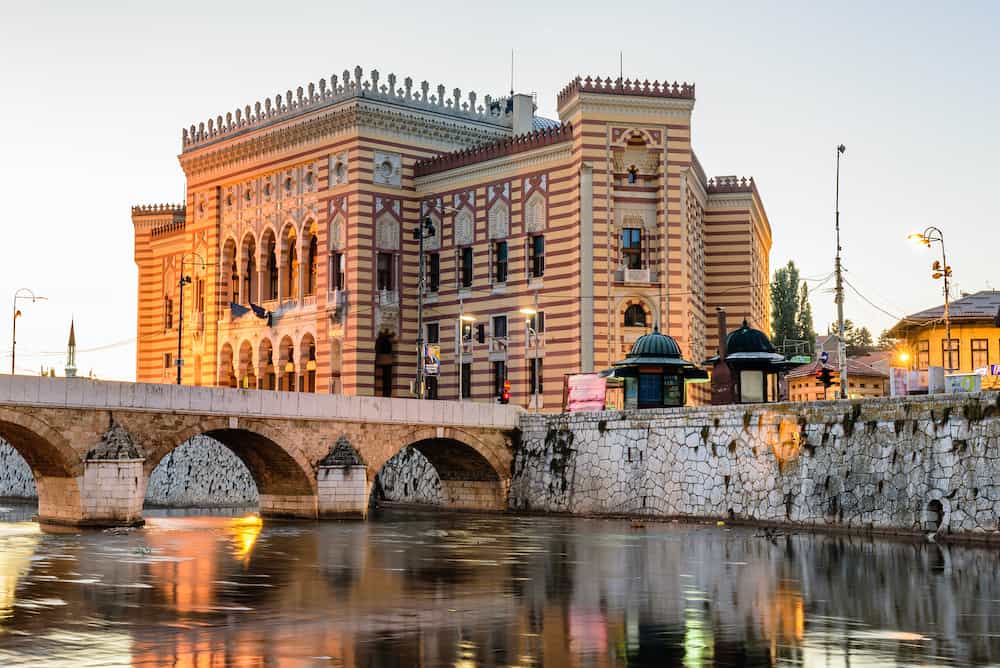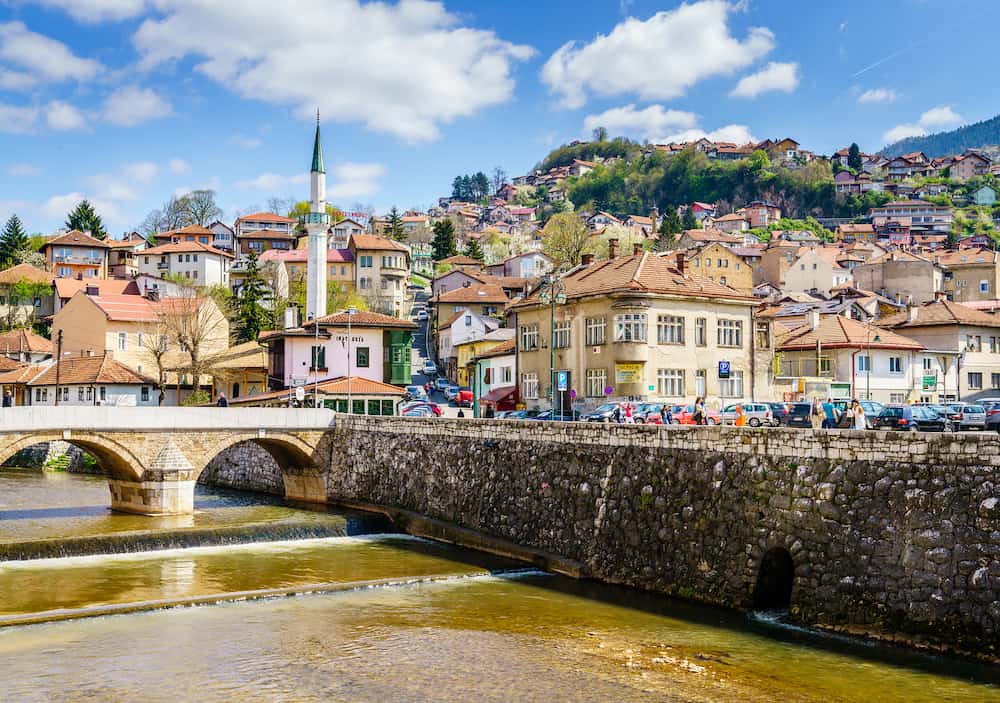15 Things to do in Mostar – That People Actually Do!
Mostar is an ethnically diverse and historically fascinating city in southeastern Europe. Located in the Herzegovina region of Bosnia and Herzegovina, it’s the fifth-largest city in the country and one of the most popular travel destinations in the Balkans.
Of course, everyone wants to see the Stari Most, the large stone bridge spanning the Neretva River.
This medieval gem is full of Ottoman-style architecture and other Turkish influences combined with an abundance of vibrant modern street art. However, it’s also a city greatly affected by war, and you will certainly feel this lasting impact while walking through the streets.
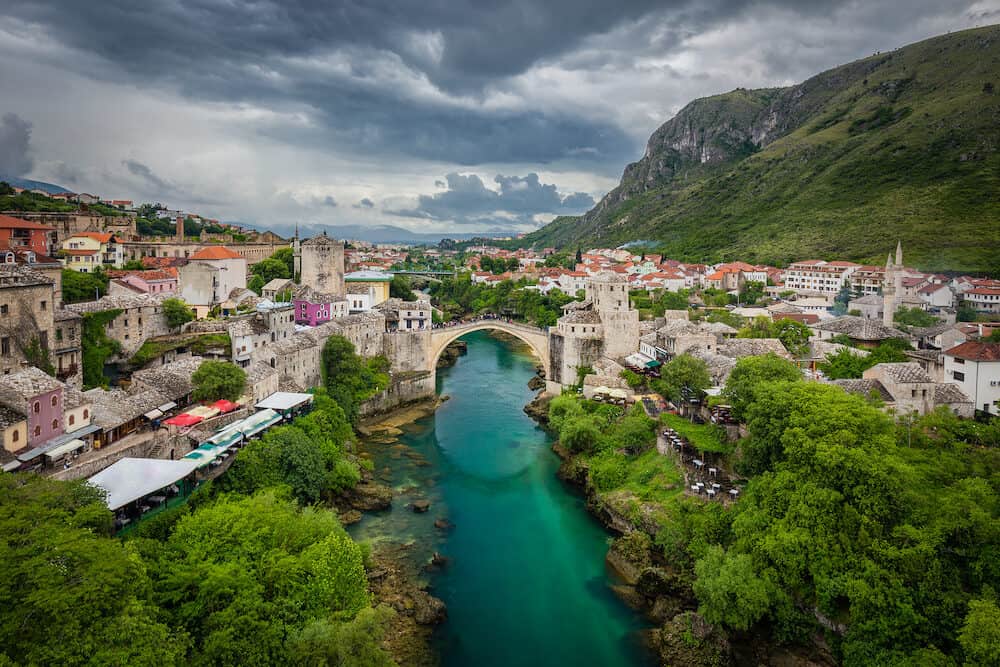
The best time to visit Mostar is during spring or autumn. It’s unbearably hot during the summer, and not very tourist-friendly during the winter.
The shoulder months like May and October allow you to walk the streets and see the sights in comfort.
Wondering what there is to see and do here, or why you should visit? Keep reading for 15 things to do in Mostar, Bosnia.
Plan your trip
Save on fees abroad with the Wise Card—use it at ATMs, restaurants, and for flights or hotels in over 150 countries. Manage 40+ currencies in real-time with the Wise app.
Need Help Planning?
- Cheap Flights: Find the best deals.
- Accommodation: From hostels to luxury stays.
- Car Rental: Affordable options worldwide.
- Sightseeing Tours: Explore without breaking the bank.
- Travel Adapter: One adapter for all your needs.
- Travel Insurance: Don’t risk it—stay covered.
This post includes affiliate links. Read my full disclosure and content policy.
Old Bridge
If you only know one thing about Bosnia, chances are it’s the Old Bridge. Known locally as Stari Most, this iconic structure crosses over the turquoise Neretva River. It is an emblematic landmark in Mostar and an integral piece of the Old Town.
Made from stone in a hump-backed shape, the Stari Most is 30 metres long and about 24 metres high above the water.
Diving from the top of the bridge is a traditional pastime, particularly for young men coming of age. An annual diving competition is held during the middle of summer. Since the river below is so cold, some training is required.
That said, it’s not uncommon to see tourists diving too. If you doubt your skills, it’s better to sit back and watch others take the plunge.
The bridge you see here today is a modern replica of the 16th-century Ottoman bridge, which was destroyed during the Croat-Bosniak War in 1993.
Upon reopening in 2004, it was listed as a UNESCO World Heritage Site. Initially commissioned by Suleiman the Magnificent and designed by Mimar Hayruddin, a student of Mimar Sinan, the bridge is a superb example of Balkan Islamic architecture.
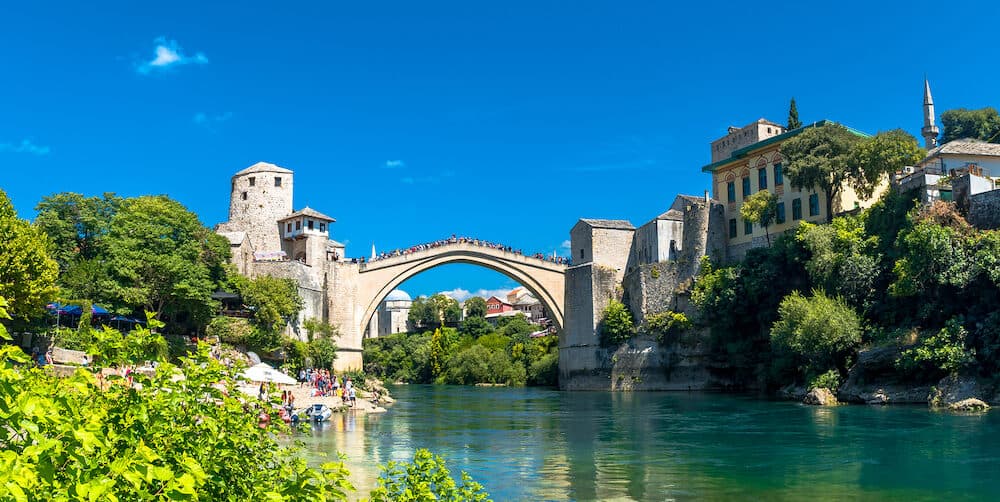
Karadoz Bey Mosque
The 16th-century Karadoz (or Karagöz) Bey Mosque is the most important Classical Ottoman mosque in Bosnia.
The 16-metre-high dome and 35-metre-high minaret make it the largest in the region. Believed to have been designed by chief Ottoman architect Mimar Sinan, it is listed as a National Monument of Bosnia.
For a small fee, you can climb the winding staircase of the minaret tower and look out over the Neretva River, the Stari Most and the nearby mountains.
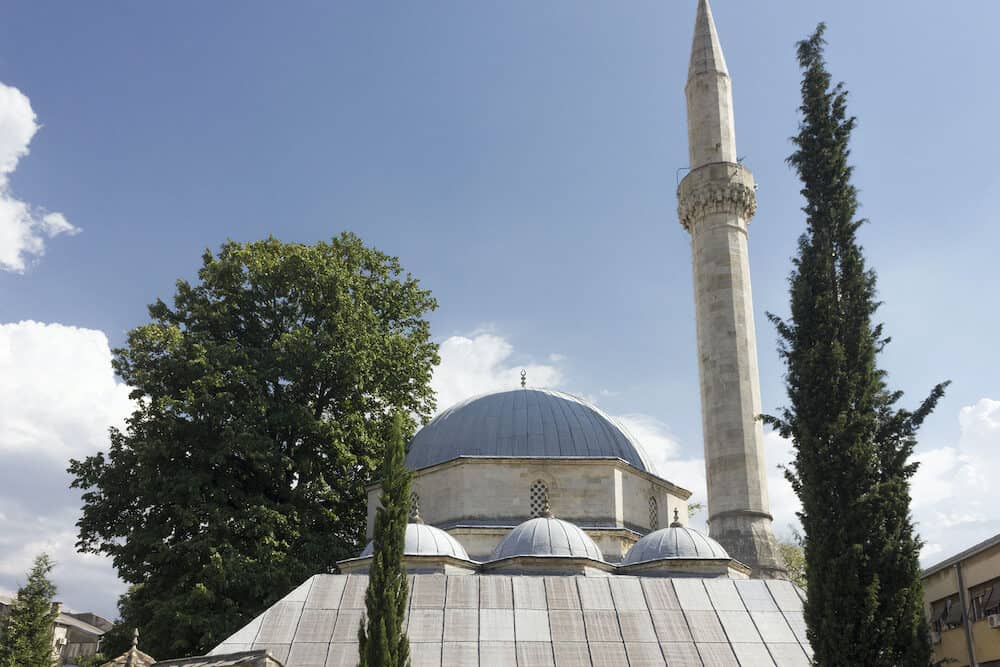
Koski Mehmed Pasha Mosque
A short walk along Braće Fejića from the Karadoz Bey Mosque is the Koski Mehmed Pasha Mosque, another wonderful piece of Islamic Ottoman architecture.
Designed in Istanbul and built in 1618, its dome is painted with beautiful botanical motifs and the colourful stained-glass windows shine vividly during the day. These days, the mosque operates like a museum rather than a traditional place of worship, though you’ll still see a few people praying here.
Conveniently perched along the cliffs of the river, you can also climb up the minaret for a breathtaking view of the Old Bridge.
Although it’s quite steep and narrow, it’s one of the best things to do in Mostar. In fact, visitors of all faiths are encouraged to stop by for this unique vantage point. Enter through the gated courtyard and pay €6 for this unforgettable sight.
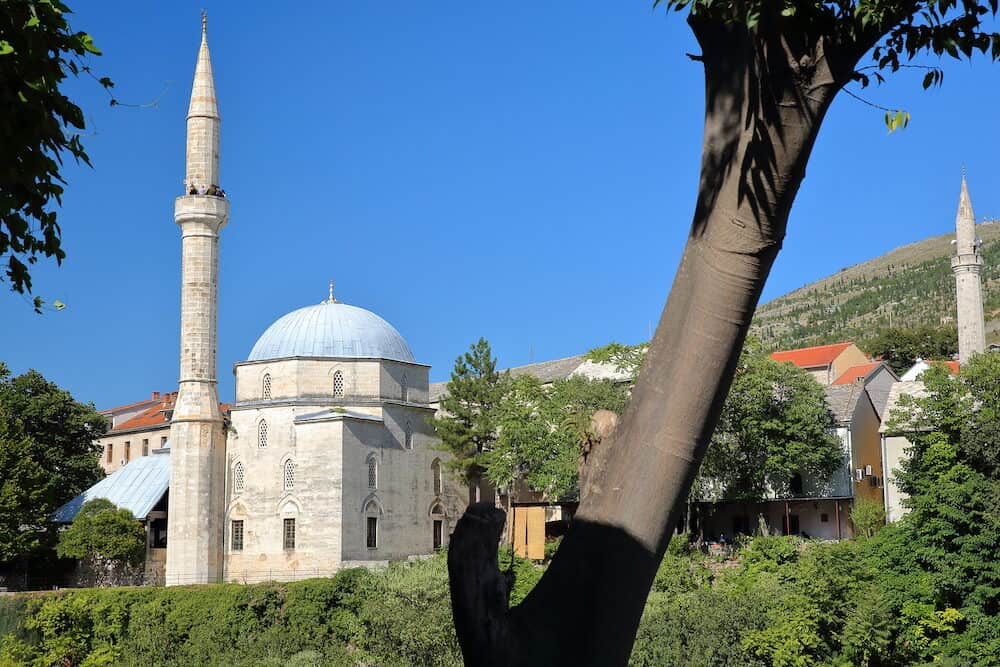
Bazar Kujundžiluk
Bazar Kujundžiluk, or simply the Old Bazaar, is the heart of Mostar’s Old Town. The cobbled pedestrian-only street is lined with 16th-century buildings, some of which are painted vibrant pink. Within the stone structures are traditional home-style restaurants and shops selling colourful handicrafts.
Bosnia offers some of the most interesting and genuine souvenirs, so take advantage of this as you wander through the bazaar and find yourself a bargain. Pick up a pair of velveteen slippers, an eclectic pashmina, or a Mostar copper coffee set to take home.
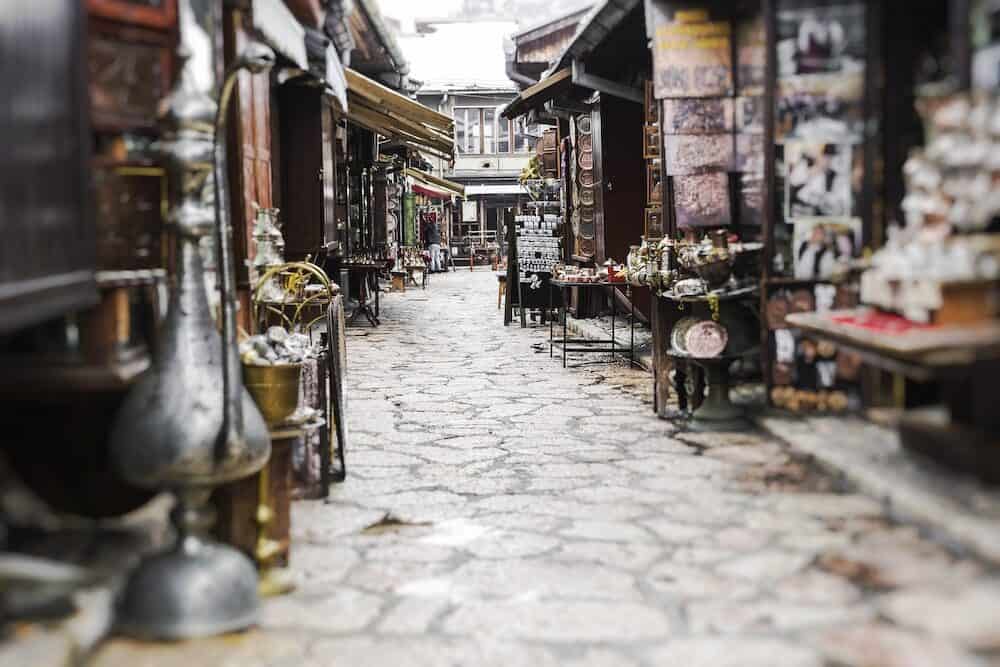
Blagaj Tekke
About 12 kilometres southeast of Mostar is Blagaj, a small village with a tranquil atmosphere. The area is best known for the Dervish monastery, Blagaj Tekke, built by the edge of the Buna River.
Vrelo Bune, the emerald green karst spring beside the tekke, is one of the biggest and cleanest in Europe. Due to the historic architecture and sheer natural beauty, it’s without a doubt one of the most idyllic (and somewhat mysterious) places in Bosnia.
Dervishes are followers of Sufism, which is often described as Islamic mysticism. The tekke was built during the early 1500s for Sufi members to pray and perform spiritual services. You can enter and look around the rooms for an entrance fee of €2.50.
There are also a few restaurants nearby, so you can enjoy a cup of tea or a meal overlooking the incredible view. If you’re willing, take a short boat ride into the cave and taste some of the fresh, cold water.
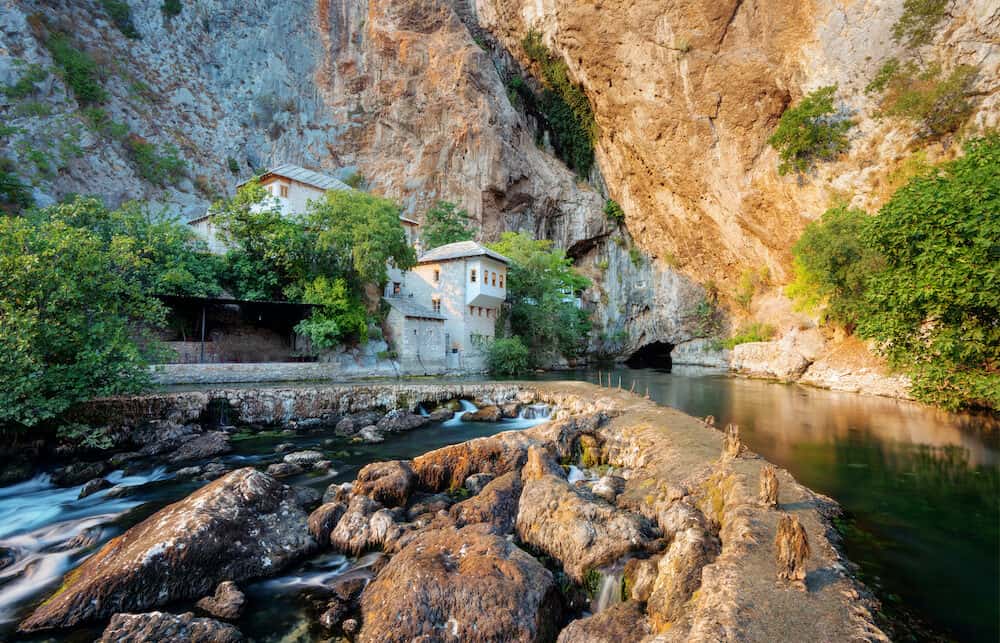
The Crooked Bridge
Mostar’s Crooked Bridge, the Kriva Cuprija, is a much smaller version of the Stari Most. In fact, it was considered to be a trial run for the much larger bridge, which is only a short walk away.
Similarly, this bridge is a replacement for the original Ottoman structure built in 1588, which was destroyed by a flood in 1999.
The Kriva Cuprija is a lovely, charming part of the Old Town that could be straight out of a fairytale. Only eight metres wide, it crosses the tiny Radobolja River and is surrounded by local restaurants and taverns.
If you can’t tear yourself away from the view, stop for a drink at the Black Dog Pub or dinner at Restaurant Divan, both of which overlook the bridge.
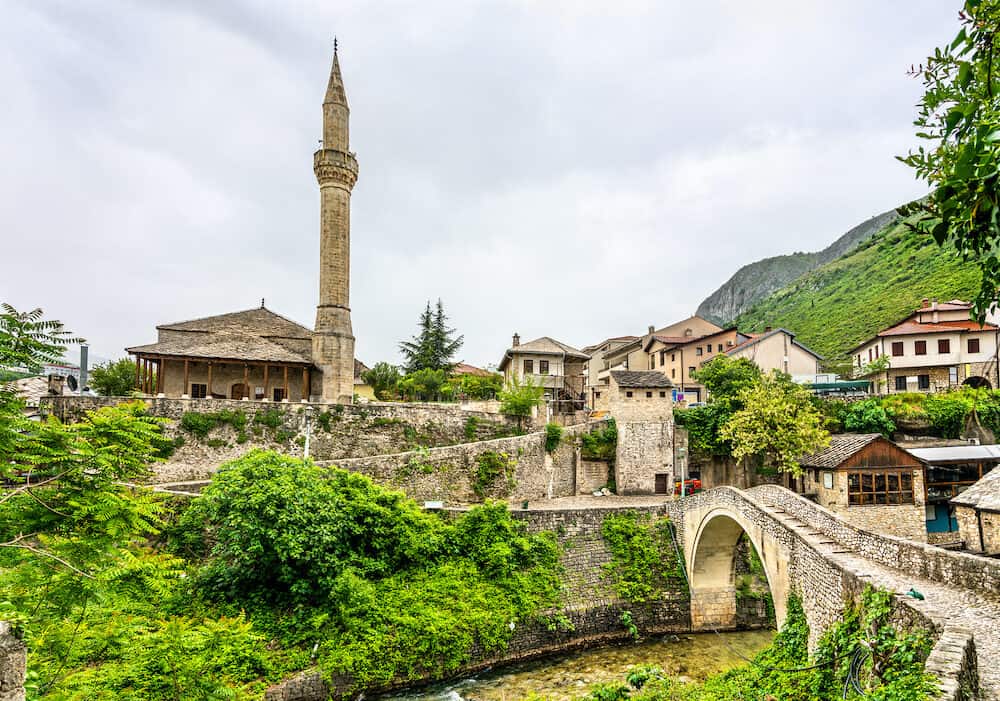
Muslibegovic House
The Muslibegovic House is a national monument, museum and hotel all in one. The Bosnian-Ottoman-style residential complex was built in the 18th century and includes two courtyards with luscious secluded gardens.
Throughout the house, there are fascinating artefacts and stunning examples of Ottoman calligraphy on display.
As one of the most captivating buildings in the city, it’s also a terrific place to stay during your time in Mostar. The Old Bridge is less than a 10-minute walk away, with many other attractions even closer.
There are 12 historic bedrooms and suites available with well-preserved interiors and antique furnishings. The stone walls and four-poster beds combined with modern bathrooms and amenities create a truly unique and cosy setting.
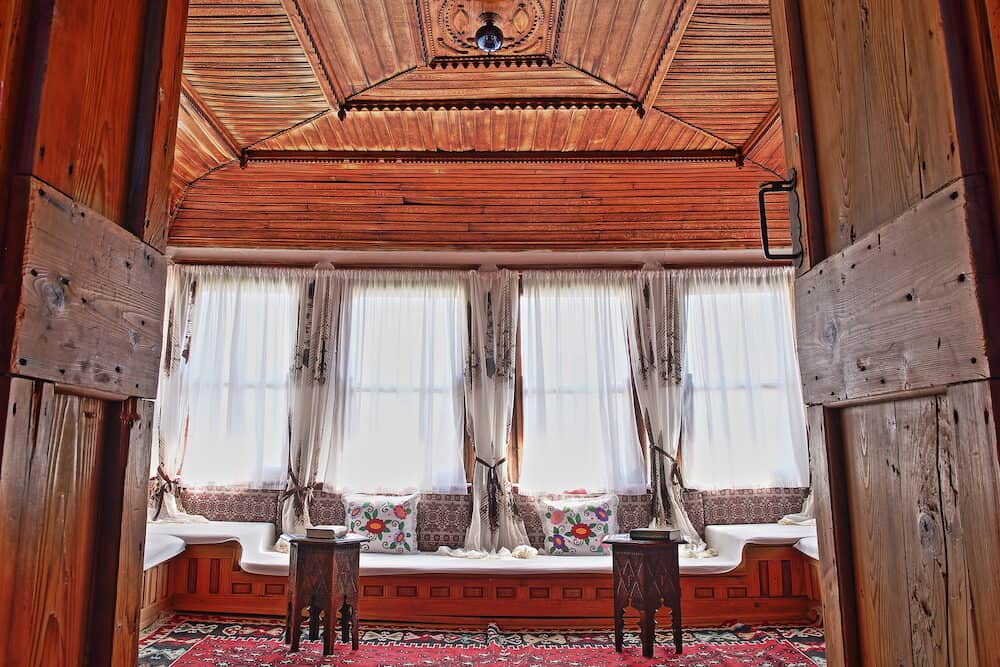
War Photo Exhibition
The War Photo Exhibition in Mostar is a moving collection of images taken during the Bosnian War from 1992 to 1995. 50 black and white photographs by New Zealand photojournalist Wade Goddard show the emotions and daily life of citizens under the most dreadful conditions.
Each photo is accompanied by an explanation in English so you can learn more about the conflict. The exhibition is open daily and is well worth the €3 entrance fee.
Sniper Tower
Mostar’s Sniper Tower is a fascinating attraction for its complex history and role during the Bosnian War. Once a former Yugoslav bank, the building’s location in the west of the city was used strategically by snipers during the Siege of Mostar.
While there is no official entrance, it’s not too difficult to climb your way over the rocks and find the staircase from the back. Be careful and watch your step as you walk up the stairs, and avoid getting too close to the open elevator shaft.
On each floor of the abandoned building, you’ll find graffiti and street art along the walls representing the themes of war and death.
A visit here provides a little adrenaline rush, particularly if you’re afraid of heights, and the atmosphere is somewhat haunting when thinking about the harrowing events that occurred here. You’ll also notice the buildings surrounding the tower remain completely covered in bullet holes.
Partisan Memorial Cemetery
Created to honour the 560 Yugoslav Partisans of Mostar who lost their lives during World War II, the Partisan Memorial Cemetery has a unique and eerie atmosphere.
Unfortunately, the cemetery is now badly vandalized and neglected. Despite this, it’s worth taking a look around the 20th-century socialist architecture.
If you come here already knowing about its run-down state, it can be quite a surreal experience wandering amongst the crumbling, puzzle-like stone monuments.
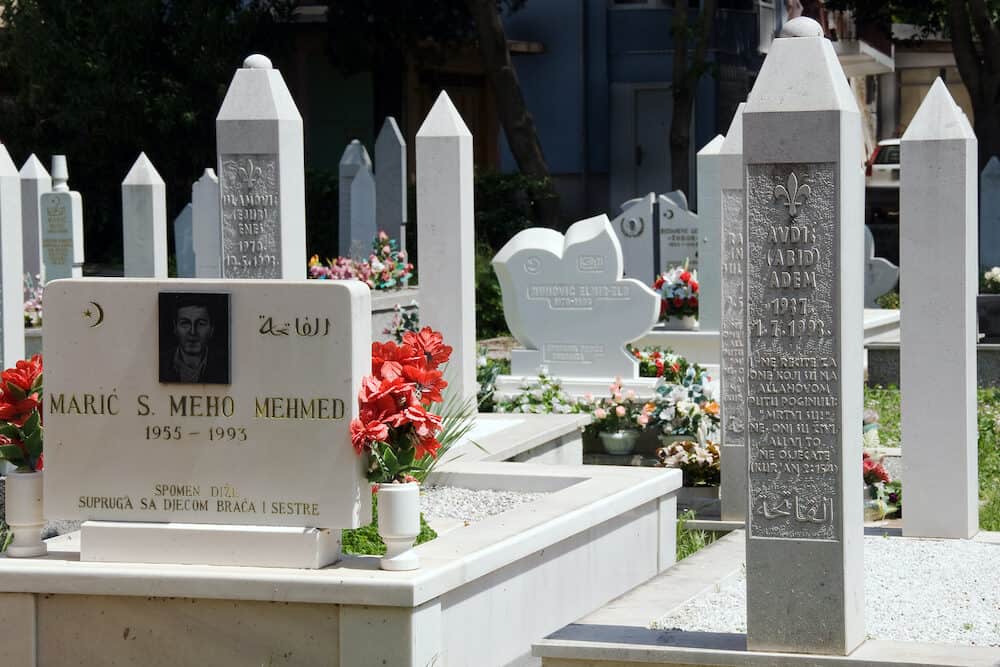
Café de Alma
While traditional Bosnian coffee is remarkably similar to Turkish coffee, it is prepared and roasted a little differently. In this part of the world, drinking coffee is an experience that shouldn’t be rushed.
Your kafa will be served to you with a delightful copper plate and cup set that’ll leave you embarrassed by your mugs at home!
Café de Alma on Rade Bitange is a top spot to sip your first of many cups. The owners and staff are friendly and passionate about their coffee, ready to explain the entire process and its history to you if you’re interested. As this type of coffee is quite strong, it’ll usually come with a sweet treat.
Café de Alma is open from Tuesday to Sunday between 10 a.m. and 5 p.m. If you’re in Mostar on a Monday, stop at Caffe Stari Grad near the Old Bridge instead.
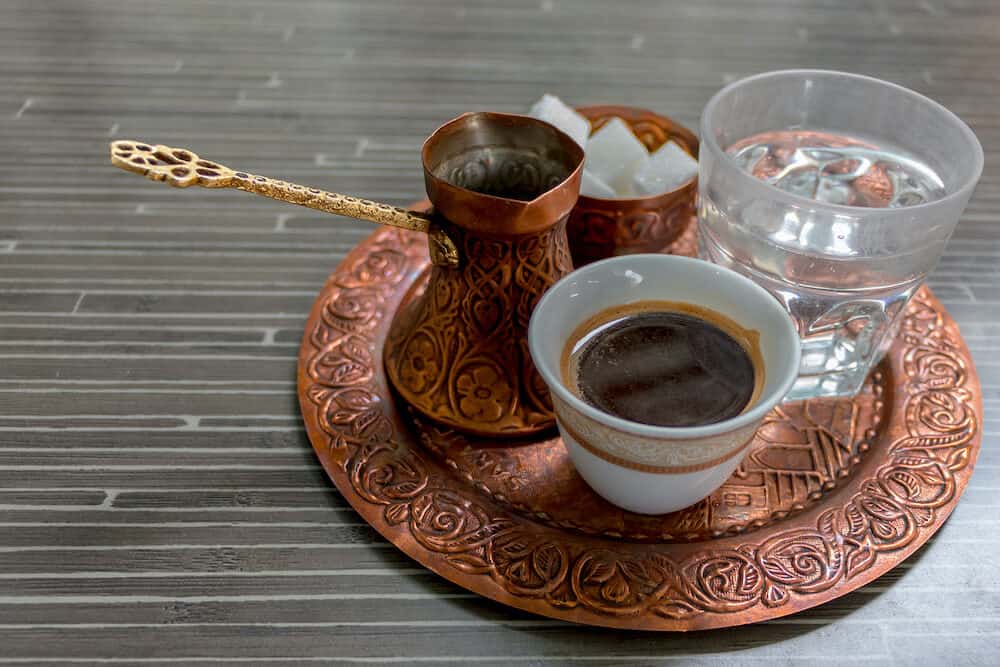
Mostar War Tour
If you would like to learn more about the history of Mostar and the Bosnian War from a local’s point of view, book a two-hour Mostar War Tour.
It can be confusing for those not familiar with the local geopolitics to understand why the war occurred and who fought who, but your knowledgeable guide will explain the events to you unbiased and answer any questions you have.
You will also be taken to various bunkers, ruins and other sites around the city that were used during the Siege of Mostar. Although the city’s background is upsetting to learn about, this is an important and insightful tour to go on.
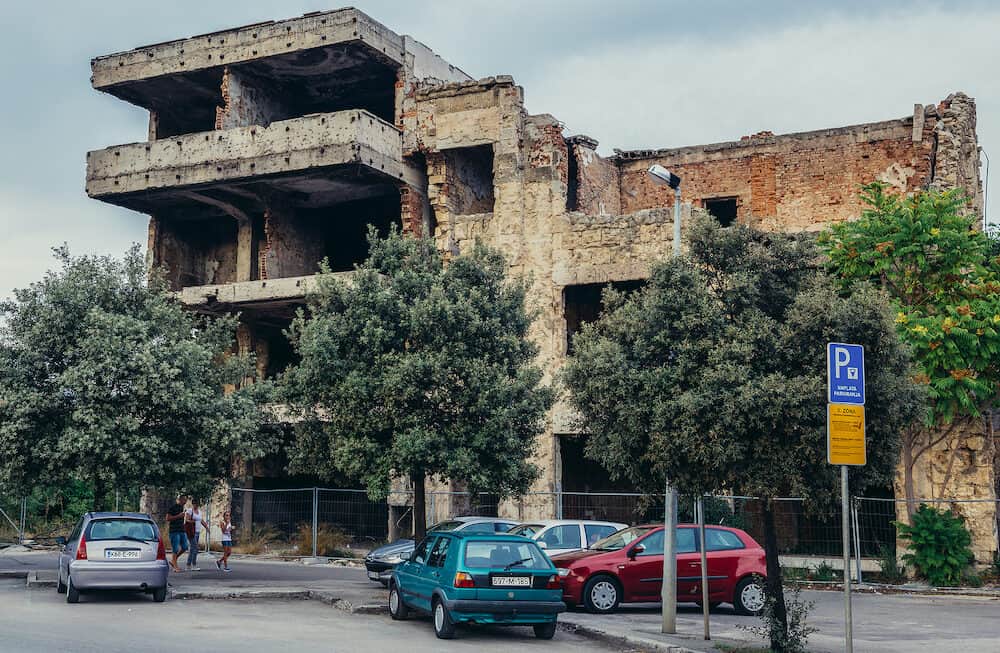
Kravice Waterfalls
Want to discover Bosnia’s own slice of paradise? Drive an hour southwest of Mostar to reach the breathtaking Kravice Waterfalls. There are no public transport options available, so you will have to book a tour, rent a car, or pay for a taxi to get here.
Kravice is a beautifully scenic spot for swimming and unwinding. Get up close to the waterfalls by renting a kayak or joining a 20-to-40-minute boat ride.
As there are no official opening or closing times, you can bring your own food and spend the entire day here. If you haven’t thought that far ahead, there are a couple of restaurants and a bar open nearby during the summer.
May and September are the best months to visit the falls, when the weather is still warm yet there aren’t as many tourists around. In winter, the water will be far too cold for swimming. The small entrance fee depends on the time of year, although it’s only a difference of one or two euros, plus a €1 parking fee.
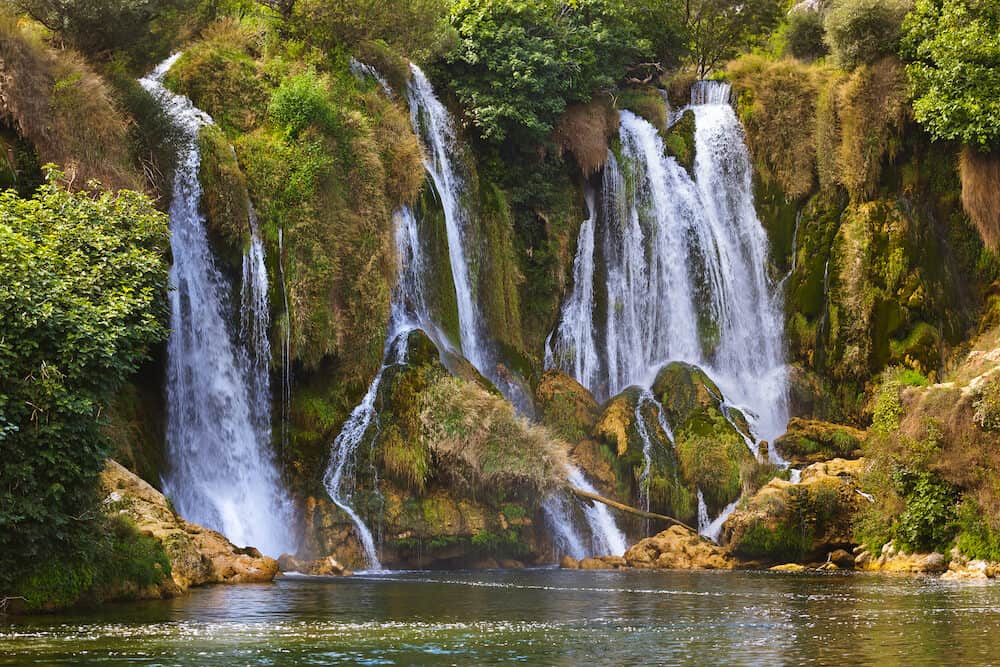
Počitelj
15 minutes from the Kravice Waterfalls is Počitelj, a historic village known for its medieval castle and open-air museum.
The Citadel Počitelj fortress was constructed in 1383 by King Tvrtko I of Bosnia and sits 45 metres above sea level. Other historic sites here include the 16th-century Hajji Alija Mosque and the restored Gavrakanpetanović house, representing typical village architecture.
As you wander around, you can pick a few pomegranates and figs from the gardens or buy some fresh juice. Wear appropriate footwear, as you’ll encounter some steep stairs.
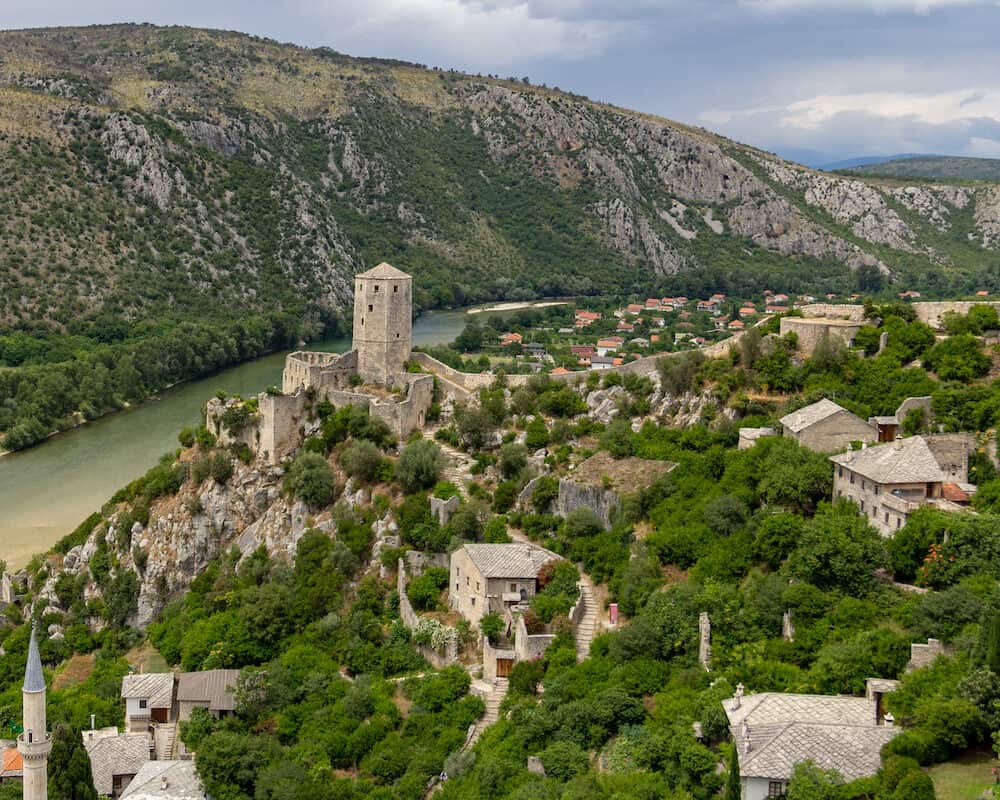
Shankly’s Pub
Not sure what to do in Mostar at night? As you might expect, the city doesn’t have a big party scene! However, there are still a few great bars to grab a drink or a late-night feed at, like Shankly’s Pub.
Located on Ante Starčevića towards the north of Mostar, stop by and take in the laid-back, welcoming atmosphere. There’s always a football match on or some great music playing.
The selection of brews here won’t disappoint! Take your pick from over 100 different beers from around the world. If you’re missing Western food, you’ll appreciate seeing burgers, toasted sandwiches and hot chips on the menu. The pub is open daily, closing at around 11 p.m.
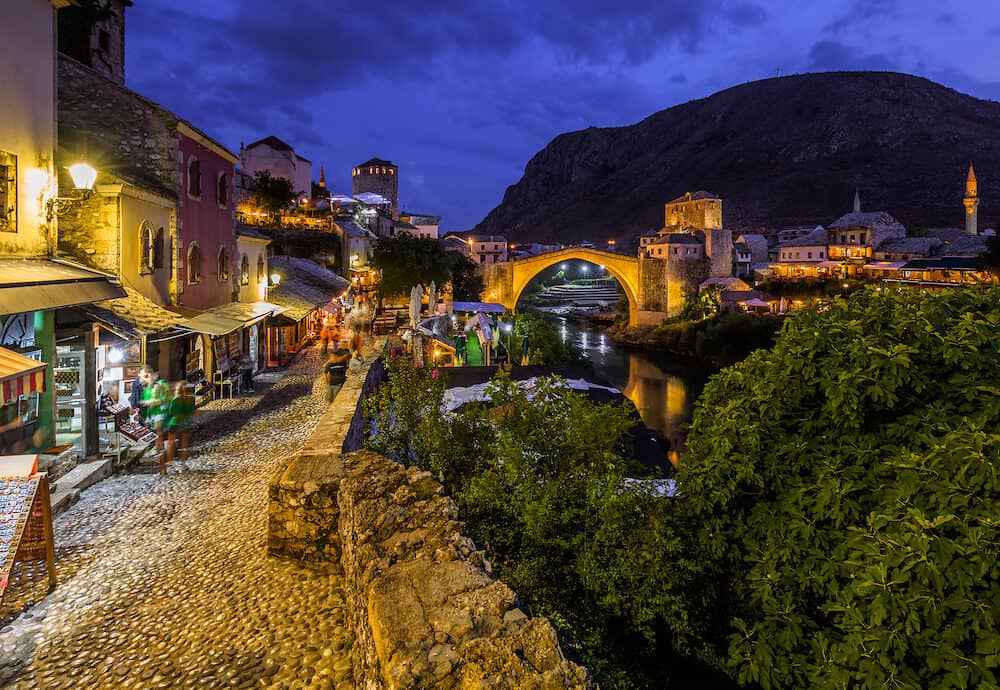
Recommended tours in Mostar
- Discover Herzegovina in a Day Tour from Mostar ( Small Groups)
- Kravice Falls, Počitelj Old Town & Blagaj Tekke Day Trip from Mostar- smallGroup
- Mostar War Tour
- Mostar Old Town Private Walking Tour
- The Death of Yugoslavia Tour in Mostar
- Bosnia and Herzegovina 3-Night Multiday Tour from Mostar
- Pearls of Herzegovina: Blagaj, Pocitelj, Mogorjelo, Kravice Waterfalls and Medjugorje Day Trip from Mostar
If you’d like to save it for later, please save it to Pinterest.
